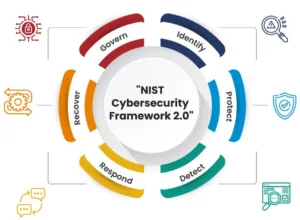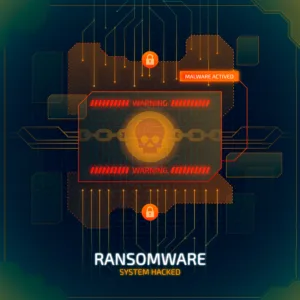
Table of Contents
In the ever-evolving landscape of cybersecurity, where new threats emerge as quickly as patches are deployed, the role of threat intelligence has become paramount. It serves as the guardian at the gate, providing crucial insights that empower organizations to bolster their defenses.
Yet, a fundamental question lingers in the minds of cybersecurity professionals and organizations alike:
To share or not to share threat intelligence?
The Cybersecurity Tightrope
Imagine you’re a fortress in the digital realm, armed with firewalls, encryption, and a vigilant team of cybersecurity experts. In this digital fortress, threat intelligence is the secret weapon, the spy in the shadows revealing the plans of potential invaders.
But here lies the dilemma – sharing this intelligence could fortify the entire cyber kingdom, yet, it might also expose your vulnerabilities.
The Case for Sharing Threat Intelligence
1. Collective Defense in a Borderless Cyber World:
Cyber threats know no borders. An attack in one corner of the world can reverberate globally. By sharing threat intelligence, organizations contribute to a collective defense. It’s a symbiotic relationship where one entity’s hard-earned knowledge becomes a shield for others.
2. Swift Response to Emerging Threats:
In the digital realm, time is a valuable commodity. The rapid sharing of threat intelligence facilitates quicker incident response. What one organization learns from a sophisticated attack can be the beacon guiding others through the storm, preventing widespread damage.
3. Strategic Insights for Proactive Defense:
Knowledge is power, especially in the cybersecurity domain. Threat intelligence offers strategic insights into the tactics, techniques, and procedures (TTPs) employed by threat actors. Armed with this information, organizations can proactively fortify their defenses against potential threats.
The Case Against Sharing
1. Risk of Exposing Weaknesses:
Sharing threat intelligence is akin to revealing the chinks in one’s digital armor. What’s intended to be a collaborative effort could inadvertently serve as a roadmap for attackers. The risk of exposing vulnerabilities raises a red flag for many organizations.
2. Competitive Concerns:
In the competitive landscape of business, organizations are wary of sharing threat intelligence that might reveal their unique vulnerabilities or security strategies. Striking a balance between collaboration and protecting proprietary information becomes a tightrope walk.
3. Legal and Privacy Complexities:
Navigating the legal landscape of data protection laws and privacy regulations adds another layer of complexity. Organizations must tread carefully to ensure compliance with regulations while fostering an environment of collaboration.
Striking a Delicate Balance
1. Anonymization and Aggregation:
To mitigate the risk of exposure, organizations can adopt practices such as anonymizing and aggregating threat intelligence. Stripping data of identifiable information while retaining its essence allows for effective sharing without compromising security.
2. Establishing Trust Frameworks:
Building trust is fundamental to threat intelligence sharing. Creating secure channels and frameworks for sharing among trusted entities fosters a collaborative environment while safeguarding sensitive information.
3. Government and Industry Collaboration:
Governments and industry bodies can play a pivotal role in facilitating threat intelligence sharing. Initiatives that encourage collaboration while addressing legal and competitive concerns can enhance the overall cybersecurity posture.
The Road Ahead
As we navigate the complex terrain of cybersecurity, the decision to share or not to share threat intelligence remains a nuanced one. Striking the right balance requires a thoughtful and holistic approach that considers the collective defense against cyber threats while respecting the need for confidentiality and the protection of sensitive information.
In this era of interconnectedness, where a vulnerability in one system can ripple across the digital ecosystem, fostering a culture of responsible and secure threat intelligence sharing is not just advisable – it’s imperative.
It demands a paradigm shift from viewing cybersecurity as a solitary endeavor to embracing a collaborative mindset.
Conclusion
In the relentless battle against cyber adversaries, where the only constant is change, the decision to share threat intelligence is not just about safeguarding individual organizations. It’s about fortifying the entire digital realm against the onslaught of evolving threats.
As we stand at the crossroads of information security, let’s remember that collaboration is our greatest asset. By sharing threat intelligence responsibly, we not only strengthen our defenses but also contribute to a united front against the ever-persistent forces seeking to exploit the vulnerabilities in our digital world.
In the delicate dance between sharing and safeguarding, the future of cybersecurity lies in our ability to find a harmonious balance.
Read more on https://cybertechworld.co.in for insightful cybersecurity related content.



















